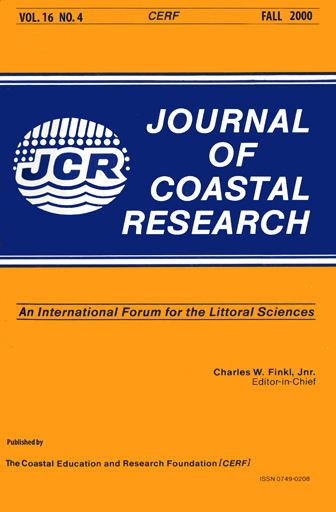An Overview of the Lena River Delta Setting: Geology, Tectonics, Geomorphology, and Hydrology
Keywords:
Siberia, Laptev Sea, Lena River, Arctic deltas, sediment budget, permafrost, ice complex, lake thermokarst, storm survey, tectonismAbstract
The Lena River Delta, largest in the Arctic, occupies 32,000 km2. It has a complicated structure caused by neotectonic block-movements, which formed an island archipelago with elevation differences as large as 60 m of distinct geological units. The modern active delta occupies spaces between older islands of the archipelago, and is just beginning to protrude into the open sea. The hydrologic pattern in the delta also shows the influence of tectonism. Numerous earthquakes during last century with magnitudes as large as 6 suggest that tectonic movement is continuing. Radiocarbon dating shows that the modern delta has been built during the second half of the Holocene. The total advance of the delta during this time was 120-150 km. The Lena River is considered the main sediment source for the Laptev Sea. The latest investigations give the suspended sediment load in the lower Lena River at 21 Mt/y, but only < 30% of this load is thought to reach the sea. The bed load transport is considerable but its value is unknown. The active sub-aerial delta is bordered by a shallow platform as wide as 18 km, which turns into a relatively steep slope at the 2 m isobath. This feature, corresponding in depth to the thickness of the seasonal ice cover, is observed only off Arctic rivers and is not understood. Some sections of the modern delta have morphological features characteristic for advancing shores, others show signs of retreat. However no measurements of delta shore dynamics are available. Thus the general direction of the process is disputable. The western part of the Lena Delta is formed by a large, 20-m-high sand island fringed by a unique lace coast formed by narrow estuary-like bays deeply penetrating the land. This unique coast undergoes intensive erosion not only on promontories but also inside of estuaries due to storm surges reaching to > 2 m height. The sand island is characterized by typical lake-thermokarst relief, but no volumes of underground ice large enough to explain this relief are known. The elongated lake depressions and lakes are oriented about 2-8o True. In the middle of generally 1- to 2-m-deep lakes are equally oriented hollows as deep as 25 m. The lakes are degrading because of erosion by stream channels draining them. The lake-thermokarst relief on the north slope of the island is partly or totally destroyed by erosion processes. Thus the Lena Delta is characterized by several unique features that are either poorly understood or unexplained.


